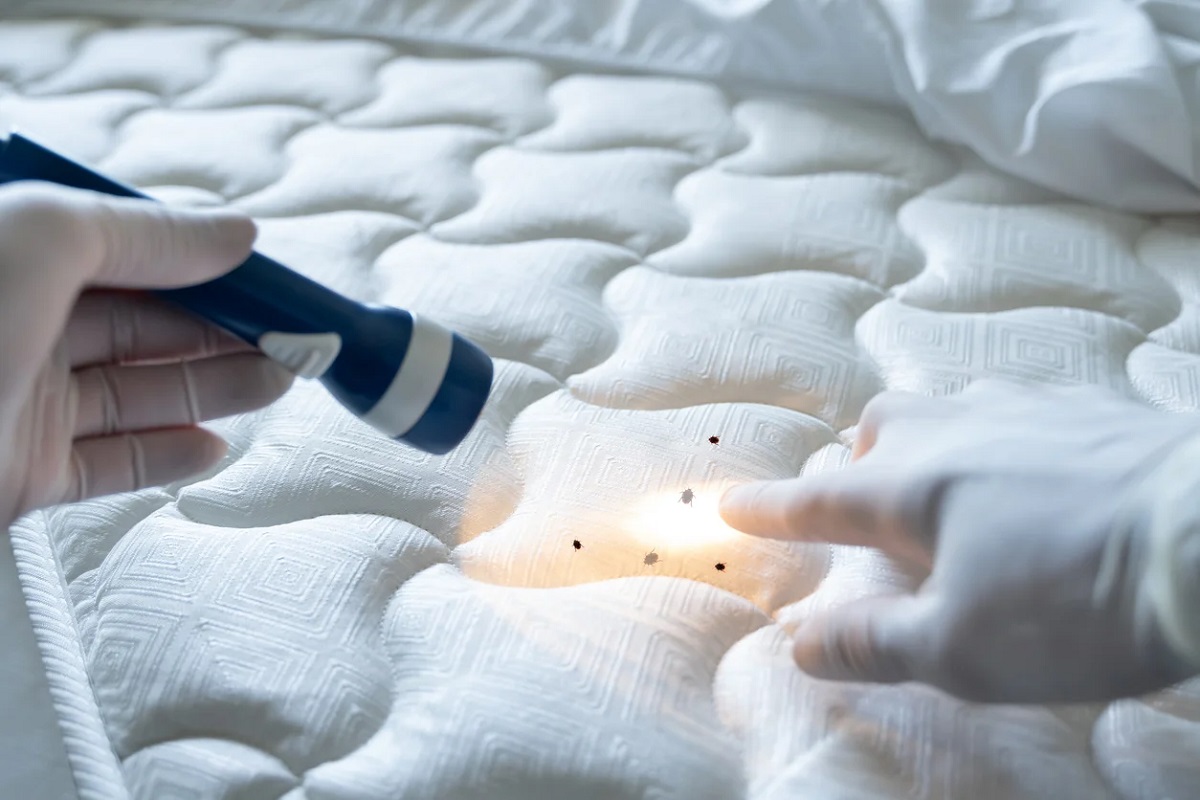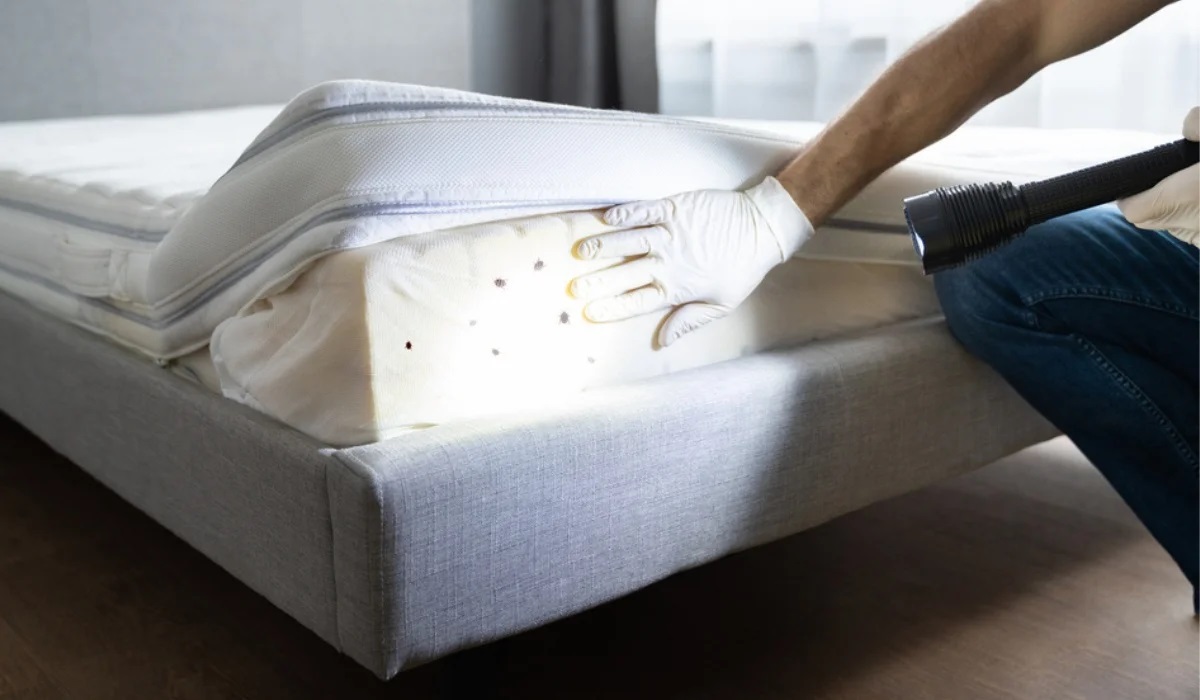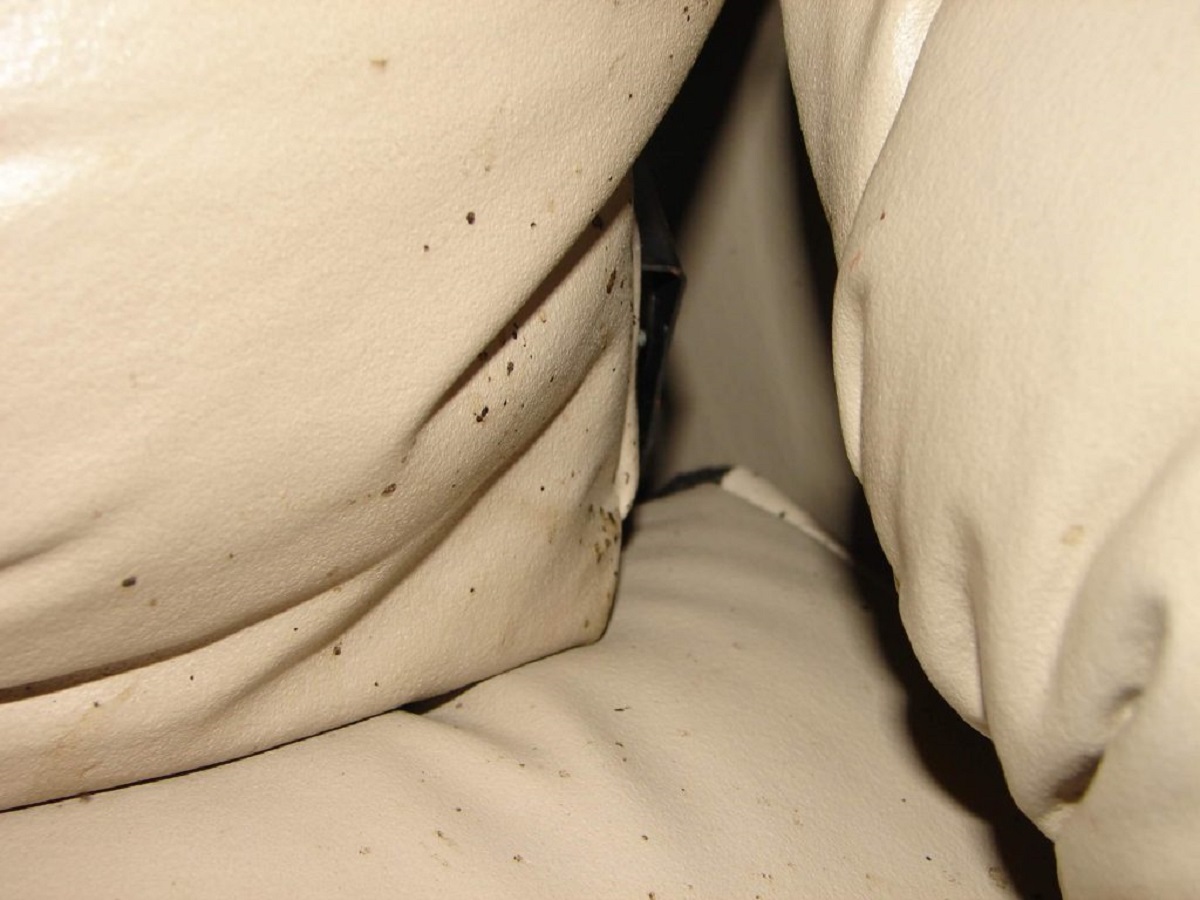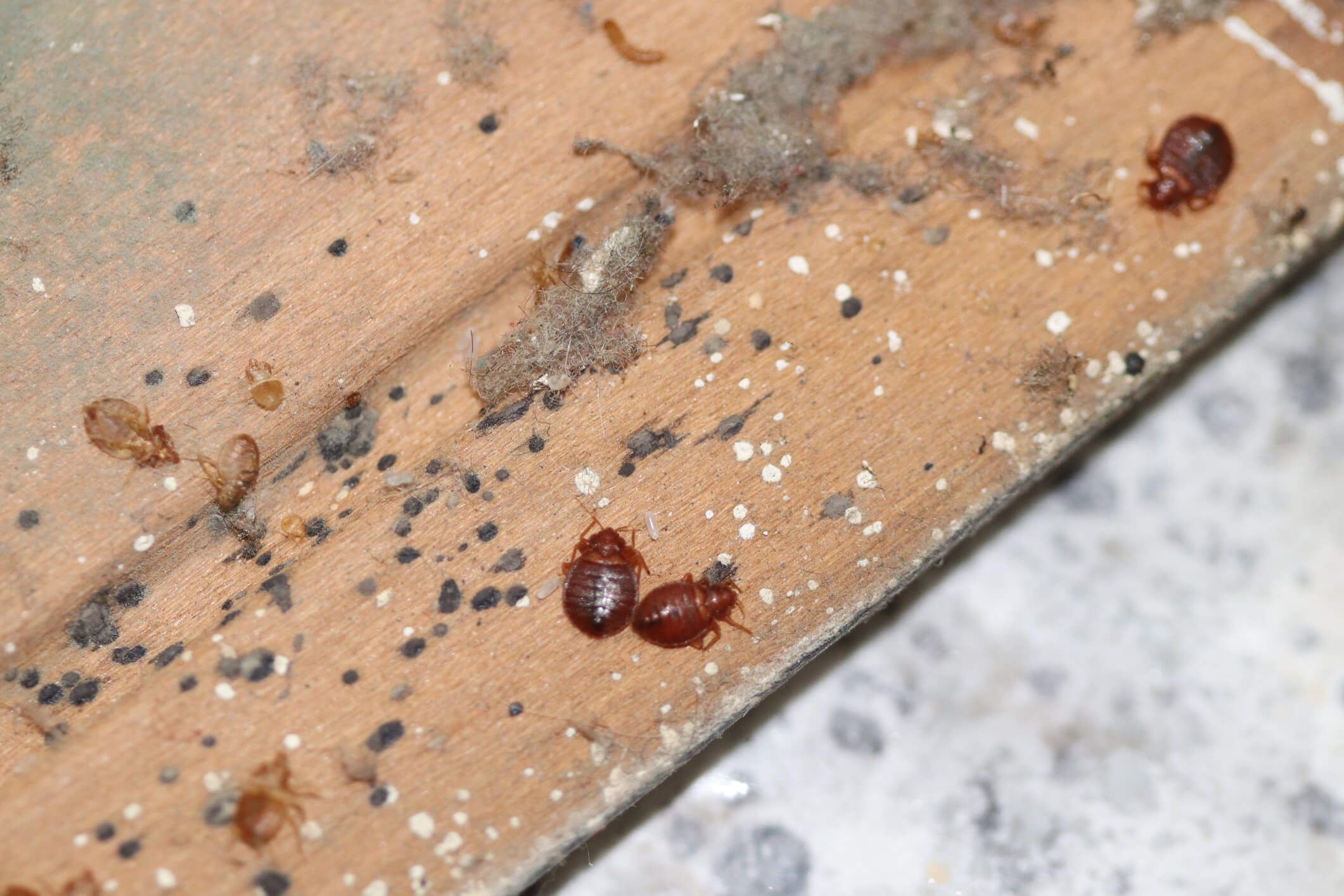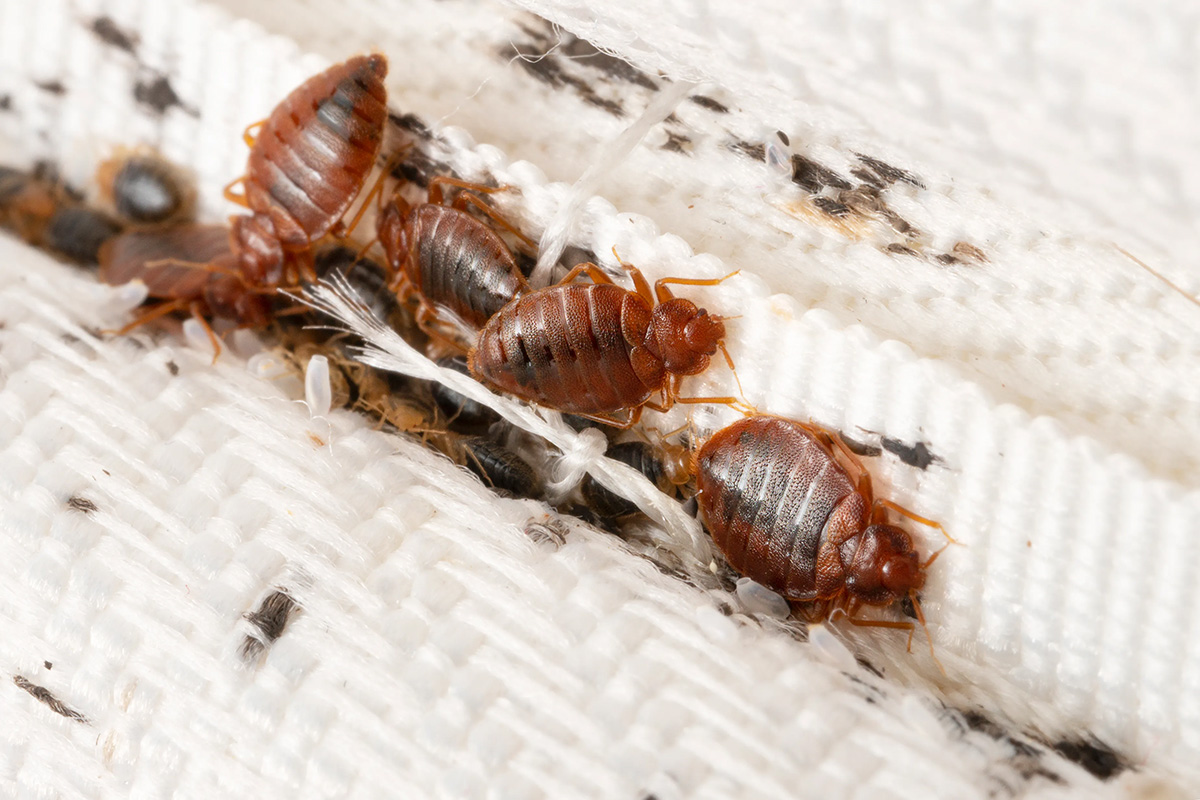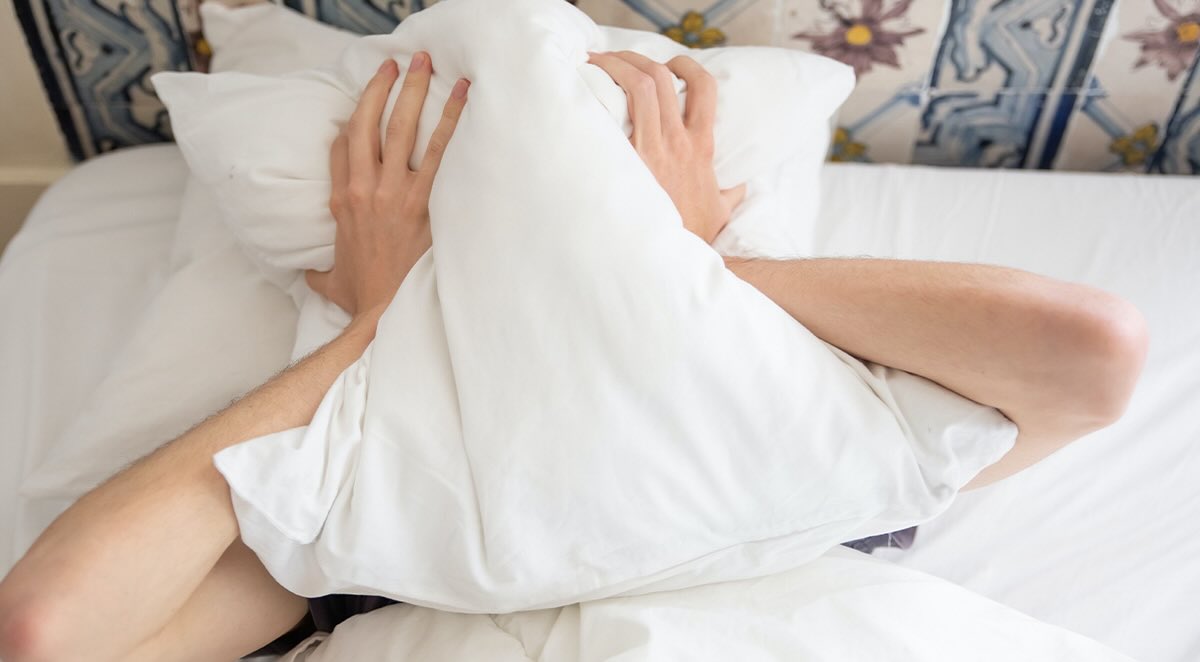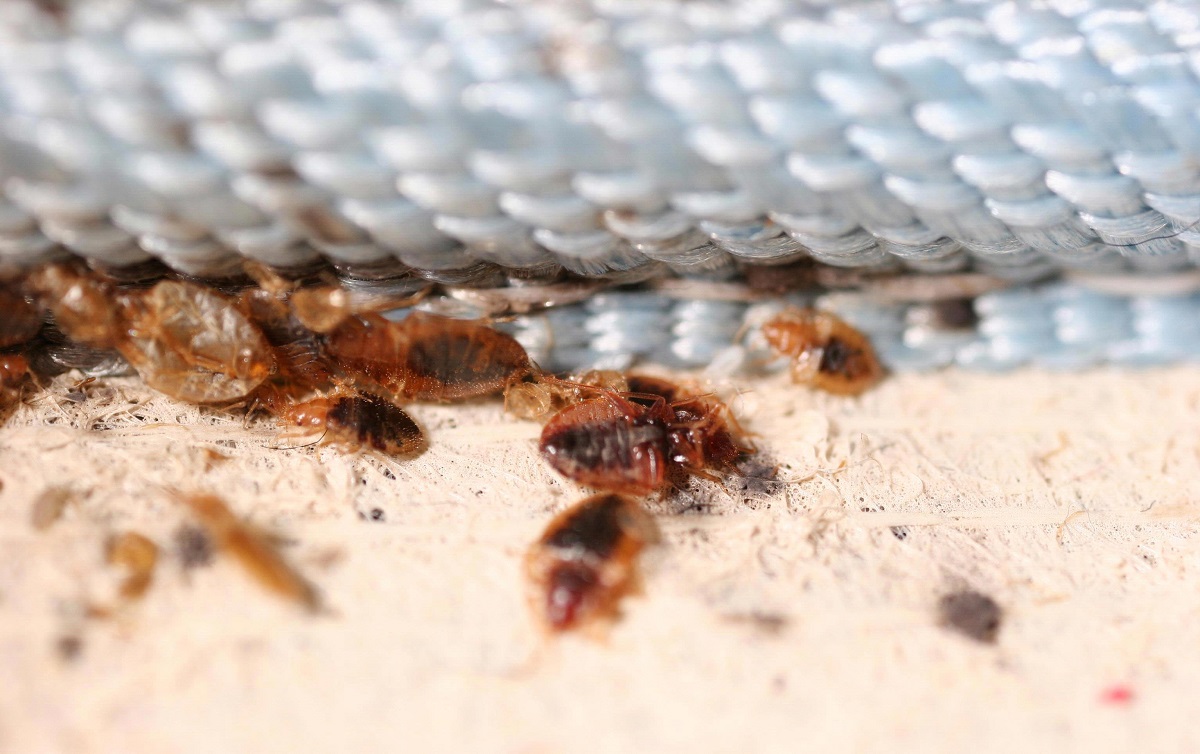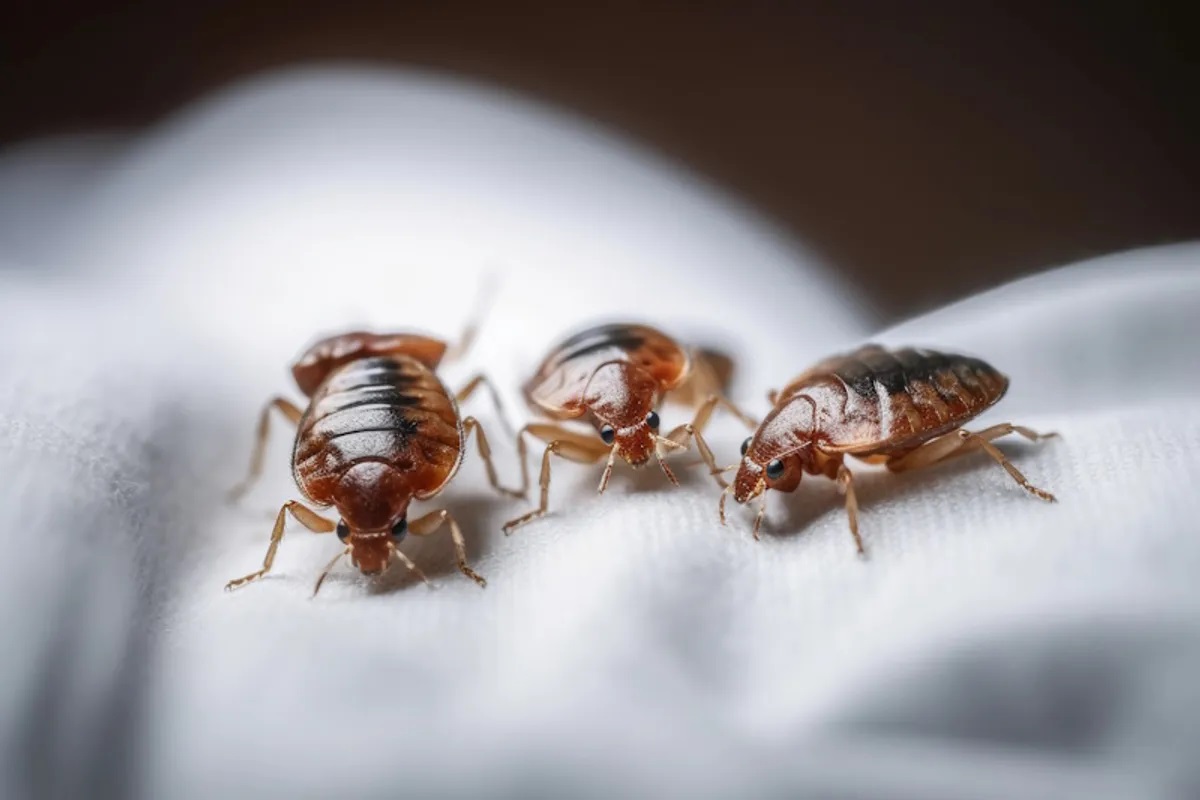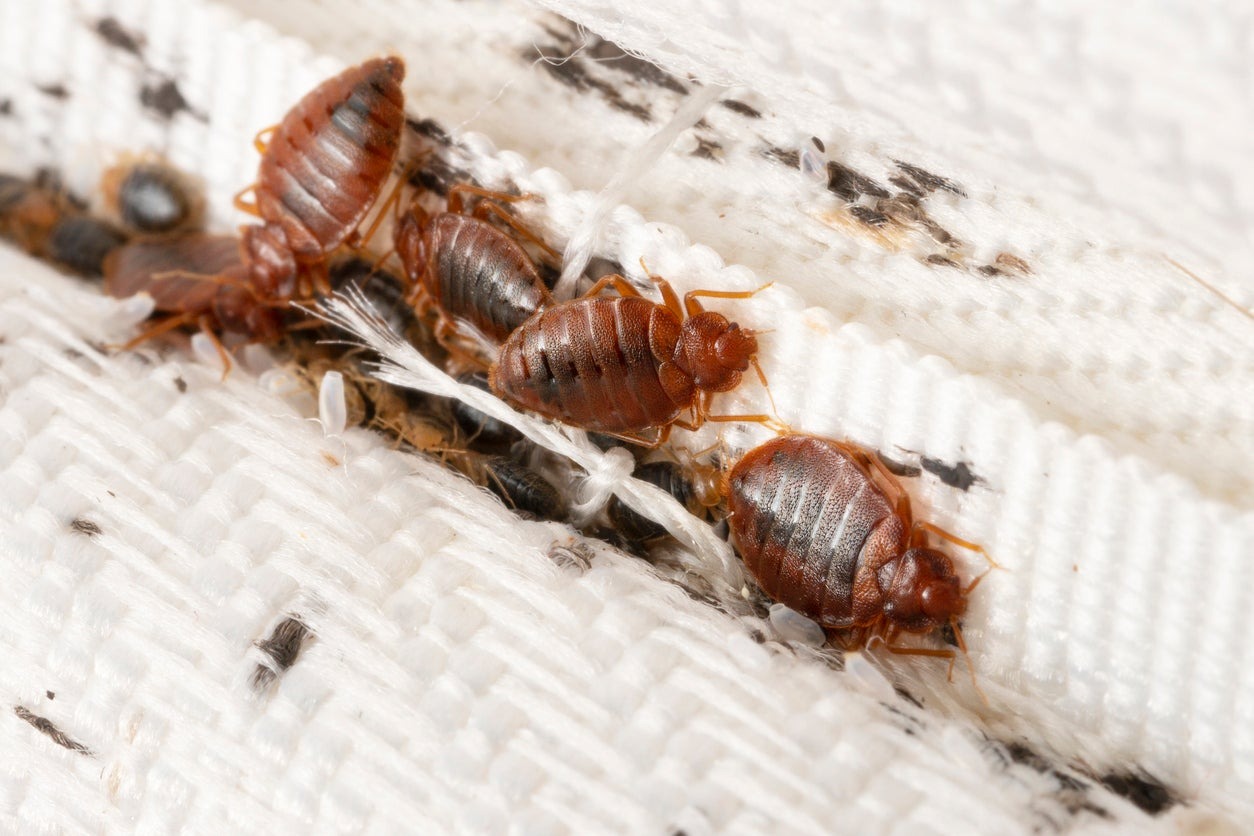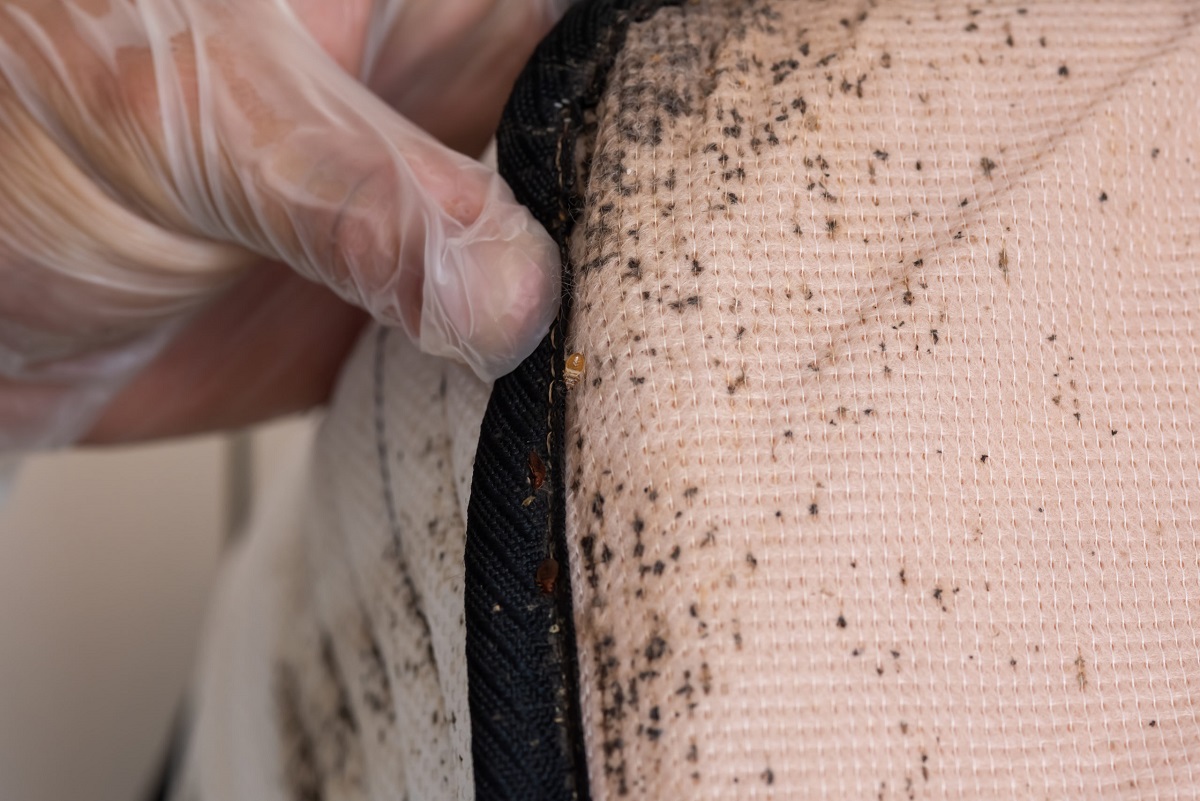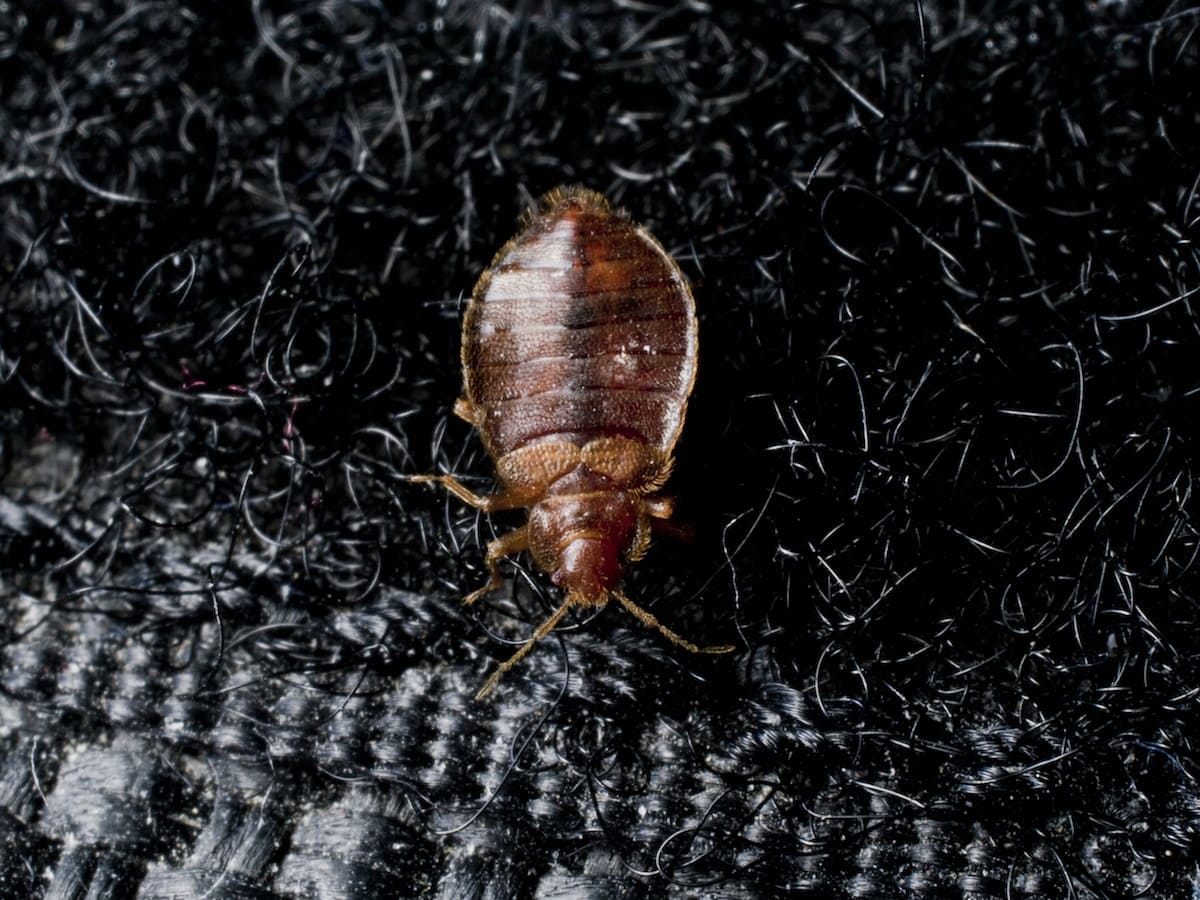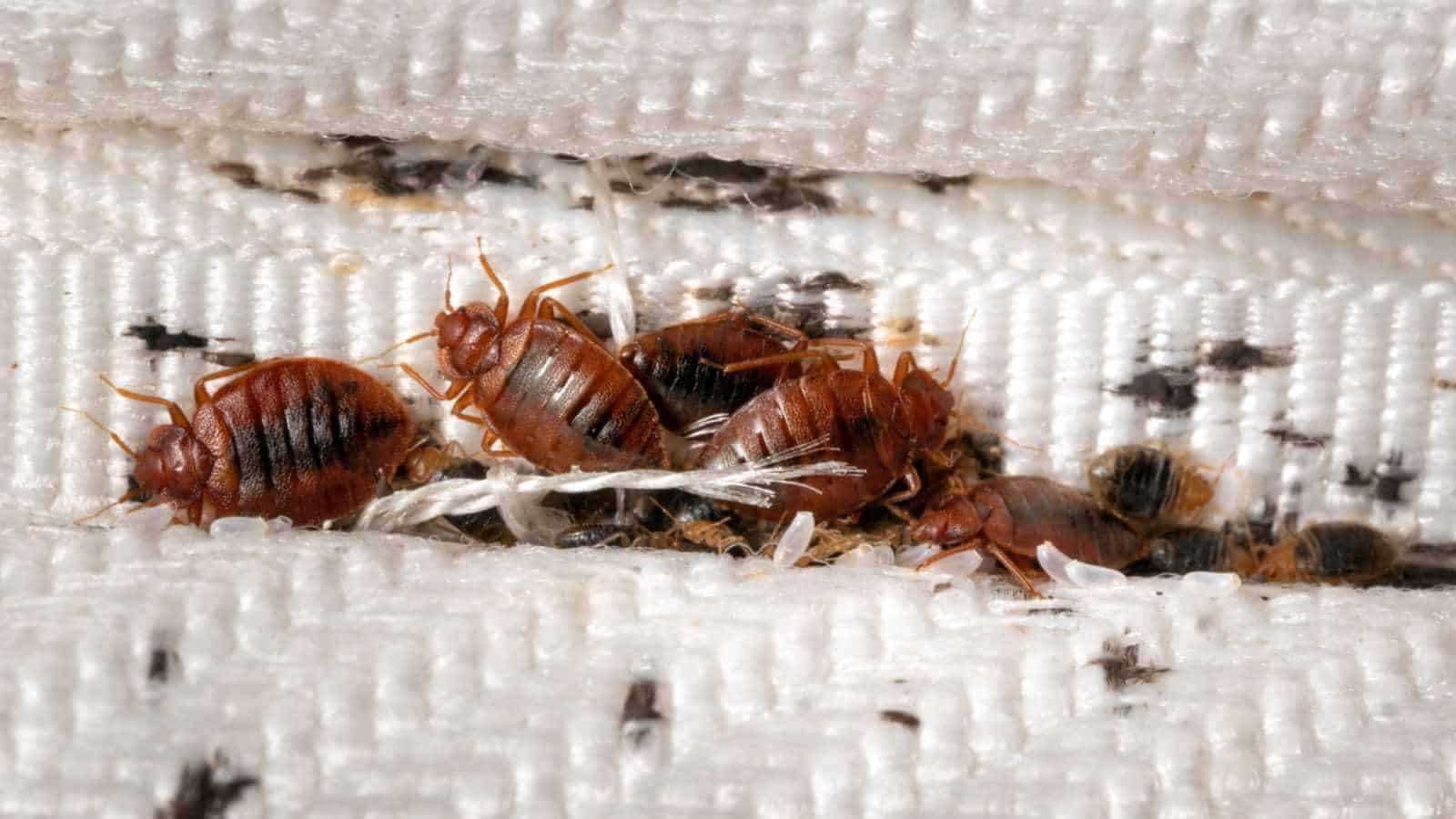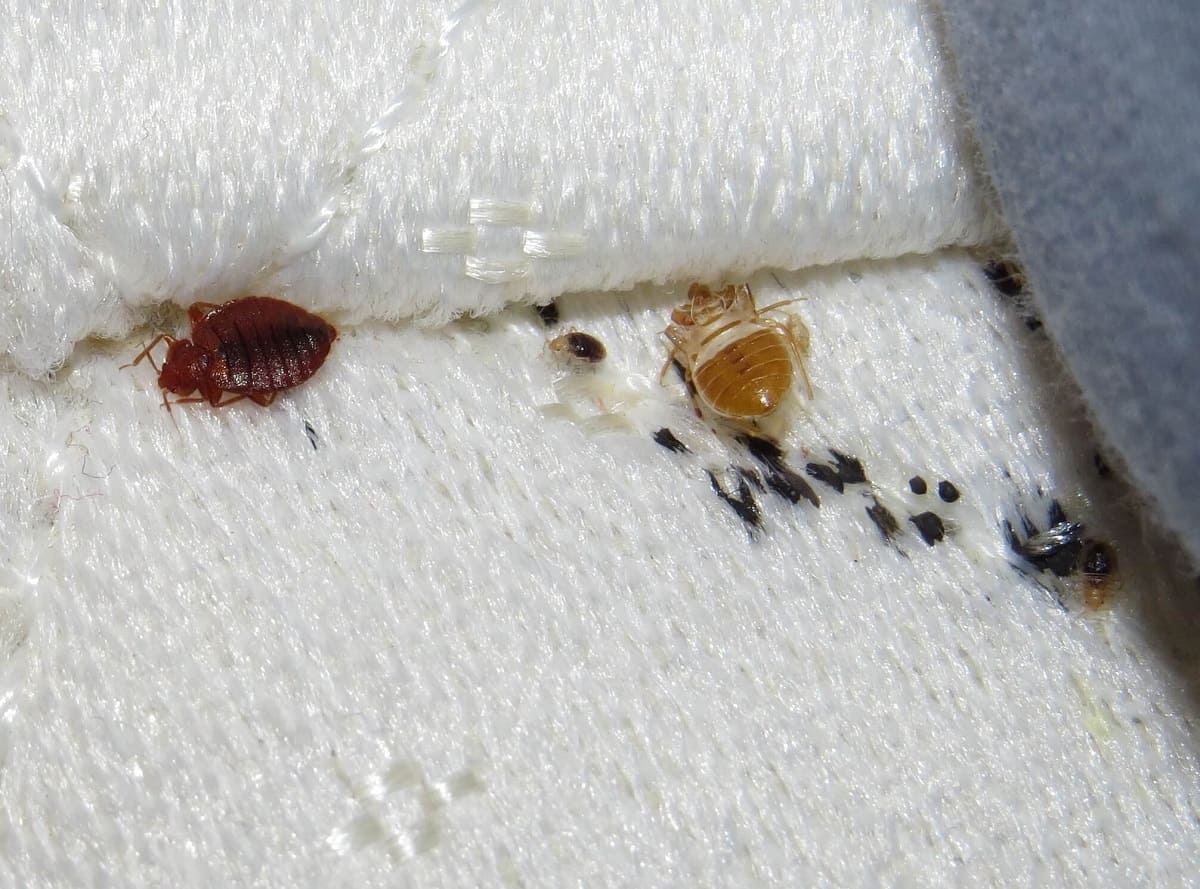Home>Furniture>Bedroom Furniture>How Do People Get Bed Bugs
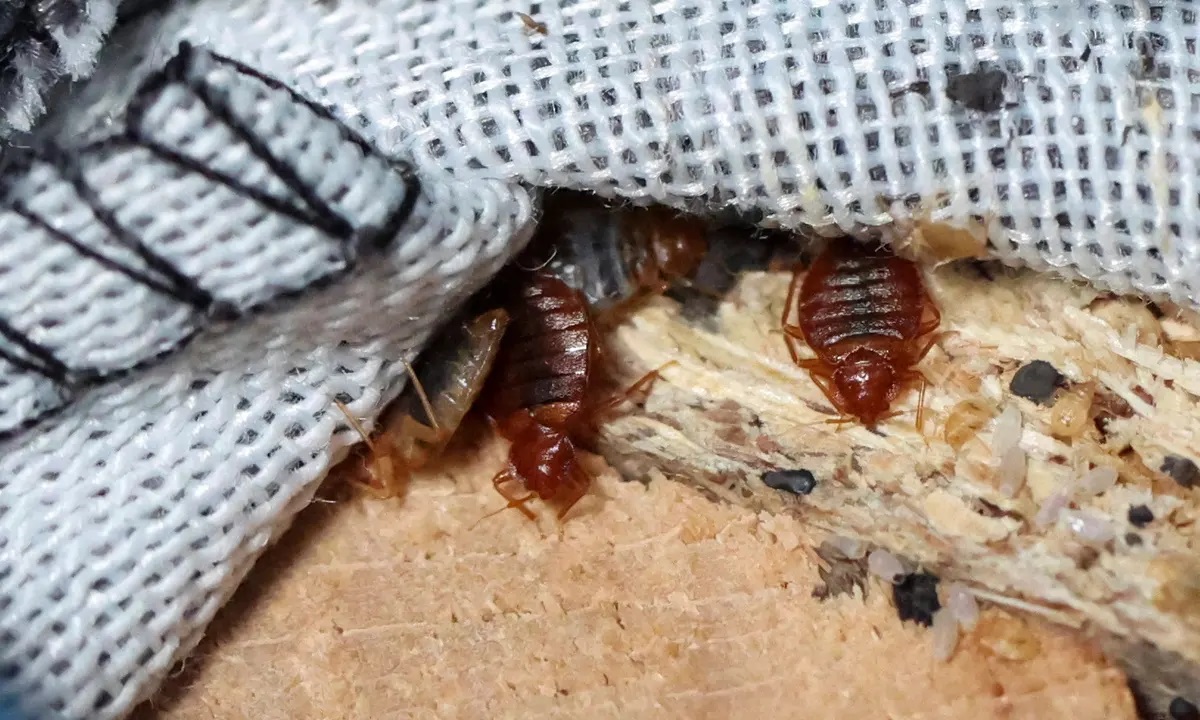

Bedroom Furniture
How Do People Get Bed Bugs
Modified: May 6, 2024
Discover how people get bed bugs and how to prevent them. Find tips and solutions for protecting your bedroom furniture from bed bug infestations.
(Many of the links in this article redirect to a specific reviewed product. Your purchase of these products through affiliate links helps to generate commission for Storables.com, at no extra cost. Learn more)
Introduction
Bed bugs are small, reddish-brown insects that are known for infesting bedrooms and causing sleepless nights. These tiny pests have become a growing concern in recent years, as their infestations have been on the rise globally. Understanding how bed bugs operate, spread, and interact with their environment is crucial in order to effectively prevent and control infestations.
In this comprehensive guide, we will delve into the world of bed bugs and explore various aspects related to their behavior, spread, prevention, and control. Whether you have experienced a bed bug infestation in the past or simply want to protect yourself and your home, this article will provide you with the knowledge you need to stay one step ahead of these troublesome insects.
Please note: The information provided in this article is for educational purposes only and should not be considered as a substitute for professional advice. If you suspect a bed bug infestation, it is always advisable to consult with a licensed pest control professional.
Key Takeaways:
- Understanding the behavior and life cycle of bed bugs is crucial for effective prevention and control of infestations. Recognizing common hiding spots and signs of infestation can help homeowners stay one step ahead of these troublesome pests.
- Proactive measures, such as inspecting hotel rooms, properly washing and treating clothing, and securing homes against bed bugs, can significantly reduce the risk of infestations. Prompt action, including hiring professional pest control services, is essential if a bed bug infestation is suspected.
Read more: How Do I Get Bed Bugs
Understanding Bed Bugs
Before we dive into the specifics of preventing and controlling bed bugs, it’s important to have a solid understanding of these pests. Let’s explore what bed bugs are, their appearance and behavior, the different stages of their life cycle, and their common hiding spots.
What are bed bugs?
Bed bugs, scientifically known as Cimex lectularius, are small, flat, and wingless insects that belong to the family Cimicidae. They are parasitic insects that feed on the blood of warm-blooded animals, with humans being their preferred hosts. While they are commonly associated with infesting beds and bedding, bed bugs can also be found in other areas of the home, such as furniture, clothing, and even cracks in walls.
Appearance and behavior of bed bugs
Adult bed bugs are typically around the size of an apple seed, measuring about 5-7 millimeters in length. They have an oval-shaped body, with a brownish color that becomes reddish-brown after feeding on blood. Their bodies are flat, allowing them to hide in tight cracks and crevices.
Bed bugs are primarily active at night, preferring to feed on their hosts during the sleeping hours. However, if they are hungry and no hosts are available, they may emerge during the day. These insects are attracted to the warmth and carbon dioxide emitted by humans, making bedrooms their ideal habitat.
Life cycle of bed bugs
Understanding the life cycle of bed bugs is crucial in order to effectively combat infestations. Bed bugs go through a gradual metamorphosis, with their life cycle consisting of three main stages: eggs, nymphs, and adults.
Female bed bugs lay tiny, white eggs in clusters or individually, often depositing them in cracks and crevices close to their hiding spots. These small and hard-to-see eggs hatch within 6-10 days, giving rise to nymphs.
Nymphs are young bed bugs that go through a series of molts before reaching adulthood. They resemble adult bed bugs but are smaller and lighter in color. Nymphs require a blood meal to molt into the next stage, and they must molt five times before reaching maturity, which can take several weeks to months depending on environmental conditions and food availability.
Once bed bugs reach adulthood, they are capable of reproducing and can live for several months to over a year under favorable conditions.
Common hiding spots
Bed bugs are excellent at hiding, which makes them a formidable pest to deal with. Knowing their common hiding spots can help you identify an infestation and take appropriate action. Here are some typical places where bed bugs tend to hide:
- Seams, creases, and tufts of mattresses and bedding
- Cracks and crevices of furniture, including bed frames, headboards, and nightstands
- Behind wallpaper, picture frames, and electrical outlets
- In clothing, especially in seams and folds
- Inside upholstered furniture and cushions
- Within luggage and backpacks
Remember, bed bugs can also infest neighboring areas, such as adjacent rooms or units in multi-family housing, so it’s essential to be vigilant and proactive to prevent their spread.
Now that we have a solid understanding of bed bugs and their behavior, we can move on to exploring how these pests spread and what factors contribute to infestations.
How Bed Bugs Spread
Bed bugs are notorious for their ability to hitchhike and spread from one location to another. These resourceful pests can easily infest new areas by latching onto clothing, furniture, and even unsuspecting individuals. Let’s explore the various ways in which bed bugs can spread and how you can minimize the risk of infestation.
Hitchhiking on clothing and belongings
One of the most common ways bed bugs spread is by hitchhiking on clothing and personal belongings. If you come into contact with an infested area, such as a hotel room or a friend’s house, bed bugs can easily crawl onto your clothing or items like bags, purses, or luggage. Once hitched, they can stow away undetected and be transported to your home or other locations.
To minimize the risk of hitchhiking bed bugs, it’s important to be vigilant when visiting unfamiliar places. Avoid placing your bags and personal items on the floor or on furniture that may be infested. Instead, use hooks or luggage racks provided, and regularly inspect your belongings for any signs of bed bugs before leaving.
Infested furniture and bedding
Used or second-hand furniture and bedding can also be a common source of bed bug infestation. If you bring in infested items into your home, you may unknowingly introduce bed bugs along with them. These pests can hide in cracks, crevices, or folds of furniture, mattresses, and upholstery, waiting for an opportunity to spread.
When purchasing or acquiring used furniture or bedding, thoroughly inspect them for any signs of bed bugs, such as live bugs, shed skins, or fecal spots. Consider treating the items before bringing them into your home, or in severe cases, avoid acquiring used items altogether.
Public places and transportation
Bed bugs are not limited to homes; they can also thrive in public places like hotels, movie theaters, libraries, and public transportation. These areas attract a constant flow of visitors, providing ample opportunities for bed bugs to spread.
When using public transportation, such as buses, trains, or taxis, be cautious and avoid placing your belongings directly on fabric seats. Use protective covers for your luggage, and be mindful of any signs of infestation, such as live bugs or bite marks.
In hotels or other accommodations, thoroughly inspect the room before settling in. Check the mattress seams, headboards, behind picture frames, and other hiding spots for any signs of bed bugs. Consider elevating your luggage off the floor and using a luggage rack to reduce the risk of bed bugs crawling into your belongings.
Infestations from neighbors or nearby areas
In multi-family housing or densely populated areas, bed bugs can easily spread from one unit or room to another. These pests can crawl through cracks, electrical outlets, plumbing pipes, or shared walls, finding new hiding spots in neighboring areas.
To minimize the risk of infestations from neighbors or nearby areas, it’s important to take preventive measures in your own living space. Seal cracks and crevices, use bed bug-proof mattress encasements, and be vigilant in regularly inspecting for any signs of bed bugs. Additionally, consider informing your building management or landlord if you suspect a bed bug issue, as prompt action can help prevent further spread.
By understanding the ways in which bed bugs spread, you can take proactive steps to prevent their infestation. In the next section, we will discuss the risk factors that can increase your chances of encountering bed bugs and ways to mitigate these risks.
Risk Factors for Bed Bug Infestation
While anyone can potentially encounter a bed bug infestation, certain factors increase the risk of bed bugs finding their way into your home. By understanding these risk factors and taking preventative measures, you can better protect yourself from the hassle and inconvenience of dealing with a bed bug infestation. Let’s examine the common risk factors associated with bed bug infestations.
Living in multifamily housing
Living in multifamily housing, such as apartments or condominiums, poses a higher risk of bed bug infestation. The close proximity of units provides bed bugs with numerous opportunities to travel between homes through shared walls, vents, or cracks. If a neighboring unit becomes infested, it’s crucial to take proactive measures to prevent bed bugs from spreading into your living space.
To minimize the risk in multifamily housing, maintain open communication with your neighbors and building management. Stay informed about any reported bed bug incidents and work together to implement preventative measures, such as regular inspections and treatment protocols.
Regular travel or frequent hotel stays
If you frequently travel or stay in hotels, your risk of encountering bed bugs is higher. Bed bugs can hitch a ride on luggage, clothing, or even attach themselves to personal belongings while you stay in infested accommodations. The transient nature of hotels provides an ideal environment for bed bugs to thrive and spread.
To reduce the risk while traveling, always inspect hotel rooms thoroughly before settling in. Pay close attention to the bedding, furniture, and upholstery for any signs of bed bugs. Consider using protective covers for your luggage and keep it elevated off the floor. When you return from your trip, wash your clothing on a high heat setting to kill any potential hitchhiking bed bugs.
Second-hand furniture and items
Bringing in second-hand furniture or items without proper inspection can introduce bed bugs into your home. Infested items, such as mattresses, couches, or even clothing, can unknowingly harbor bed bugs. Even a single infested item can lead to a full-blown infestation over time.
If you’re acquiring second-hand furniture or items, thoroughly inspect them for any signs of bed bugs. Look for live bugs, shed skins, or dark spots that may indicate bed bug activity. Consider treating the items with heat or other appropriate methods before bringing them into your home.
Lack of awareness and prevention measures
Another common risk factor for bed bug infestations is a lack of awareness and preventative measures. Not being informed about the signs, behavior, and prevention techniques associated with bed bugs can make you more susceptible to infestations.
It’s essential to educate yourself about bed bugs and their habits. Learn to recognize the signs of an infestation, such as bite marks, blood stains on bedding, or tiny black fecal spots. Take preventative measures, such as regularly inspecting your home for any signs of bed bugs, sealing cracks and crevices, and using mattress encasements.
By being aware of these risk factors and taking proactive steps to prevent bed bug infestations, you can significantly reduce your chances of encountering these pesky insects. In the next section, we will discuss the signs and symptoms of a bed bug infestation, helping you identify the presence of these unwelcome intruders.
Tip: People can get bed bugs from infested furniture, luggage, or clothing. They can also be transferred from one location to another through infested items. Inspect and clean items thoroughly to prevent infestations.
Signs and Symptoms of Bed Bug Infestation
Identifying the signs and symptoms of a bed bug infestation is crucial in order to take prompt action and prevent the problem from escalating. While bed bugs are small and elusive, they leave behind several telltale signs of their presence. Let’s explore the common signs and symptoms associated with bed bug infestations.
Identifying bed bug bites
One of the primary indicators of a bed bug infestation is the presence of bites on your skin. Bed bug bites typically appear as small, flat, or raised welts on areas of exposed skin, such as the face, neck, arms, and legs. These bites may cause itching, redness, and irritation.
It’s important to note that the appearance of bed bug bites can vary from person to person, with some individuals experiencing no reaction at all. Additionally, bed bug bites can be easily mistaken for other insect bites or skin conditions. Therefore, it’s crucial to look for additional signs to confirm a bed bug infestation.
Visual signs of infestation (stains, shed skins)
Bed bugs leave behind visual evidence of their presence, which can help confirm an infestation. One common sign is the presence of dark stains on bedding, mattresses, or furniture upholstery. These stains are caused by bed bug excrement and can appear as tiny black dots or smears.
Another visual sign is the shed exoskeletons of bed bugs. As these pests go through their life cycle, they shed their skins multiple times. These translucent or brownish skins can be found in areas where bed bugs hide, such as mattress seams, cracks in furniture, or behind headboards.
Presence of bed bug eggs or fecal spots
Bed bug eggs are another indicator of an infestation. These tiny, pearly-white eggs are about 1 mm in length and are usually found in clusters or individually, often in hidden or protected areas like mattress seams, furniture joints, or behind loose wallpaper.
In addition to eggs, bed bugs also leave behind fecal spots, which are small dark spots or streaks on bedding, furniture, or walls. These fecal spots are digested blood and appear as clusters or smears in areas where bed bugs feed or rest.
Unpleasant odor
In severe infestations, bed bugs can emit a distinct, musty odor. This odor is often described as sweet or sickly-sweet, and it is produced by the glands of bed bugs as they release pheromones. If you detect an unusual odor in your bedroom or living space, it could be an indication of a significant bed bug infestation.
It’s important to note that relying solely on the presence of bites may not be sufficient to confirm a bed bug infestation, as other factors like mosquitoes or skin allergies can cause similar symptoms. Therefore, it’s crucial to look for multiple signs of infestation before taking appropriate action.
Now that we have explored the signs and symptoms of a bed bug infestation, it’s time to discuss preventative measures and control methods to effectively deal with these pests.
Read more: How Do Bed Bugs Get Inside A Mattress
Prevention and Control Measures
Preventing bed bug infestations and effectively controlling them require a combination of proactive measures and targeted treatments. By implementing the following prevention and control measures, you can significantly reduce the risk of encountering bed bugs and minimize their impact if an infestation occurs.
Inspecting hotel rooms and accommodations
When staying in hotels or other accommodations, it’s essential to conduct a thorough inspection of the room before settling in. Start by examining the mattress seams, bed frame, headboard, and nearby furniture for any signs of bed bugs, such as live bugs, shed skins, or dark spots. Pay attention to cracks and crevices where bed bugs can hide.
If you find any indications of a potential infestation, request a room change immediately, ensuring that the new room is not adjacent to the suspected infested one. Keep your luggage elevated off the floor using luggage racks or in the bathroom, away from areas where bed bugs may hide.
Properly washing and treating clothing and luggage
To prevent bed bugs from hitchhiking on your clothing and luggage, it’s essential to adopt proper washing and treatment practices. Upon returning from trips, promptly wash all clothing, bed linens, and fabric items in hot water and dry them on high heat, as bed bugs are sensitive to high temperatures.
For non-washable items, such as shoes or luggage, thoroughly inspect them and use a vacuum cleaner with a hose attachment to remove any potential bed bugs or eggs. Consider using a portable garment steamer or a bed bug spray that is labeled for use on luggage and fabric items to eliminate any possible hitchhikers.
Securing your home against bed bugs
Preventing bed bugs from infesting your home requires taking proactive measures to create a bed bug-resistant environment. Seal cracks and crevices, including gaps in walls, baseboards, and window frames, using caulk or sealant to prevent bed bugs from hiding and traveling between rooms.
Consider using bed bug-proof mattress encasements and box spring covers to trap any existing bed bugs and prevent new ones from infesting your sleeping area. Regularly inspect and vacuum mattresses, box springs, and bed frames to remove any potential hiding spots.
Declutter your home and minimize the number of hiding places for bed bugs. Pay special attention to areas near the bed, such as nightstands, electrical outlets, and furniture. Regularly launder and dry your bed linens on high heat to kill any potential bed bugs that may have been introduced.
Professional extermination and DIY methods
In the event of a bed bug infestation, it may be necessary to seek professional help from a licensed pest control company. Professional exterminators have the expertise and resources to effectively treat and eliminate bed bugs using a combination of various methods, including heat treatments, insecticides, and targeted inspections.
However, if you prefer to tackle the issue yourself, there are DIY methods available. These include using high-powered vacuums to remove bed bugs and their eggs, applying residual insecticides to infested areas, and using steam treatments to kill bed bugs and their eggs on contact.
It’s important to note that DIY methods may not be as effective as professional treatments, especially in severe infestations. It’s advisable to consult with a pest control professional to determine the best course of action to tackle the infestation efficiently and safely.
By implementing these prevention and control measures, you can significantly reduce the risk of bed bug infestations and, if needed, effectively address the problem. In the next section, we will discuss the necessary steps to take if you suspect a bed bug infestation in your home.
Dealing with Bed Bug Infestations
Discovering a bed bug infestation in your home can be a stressful and frustrating experience. However, it’s important to take immediate action to prevent the infestation from spreading further. Here are the steps to take if you suspect a bed bug infestation, including hiring a pest control professional, cleaning and treating affected areas, and implementing prevention strategies for the future.
Steps to take if you suspect an infestation
If you suspect a bed bug infestation in your home, it’s crucial to act quickly and methodically. Start by thoroughly inspecting your living spaces, paying close attention to areas where bed bugs are likely to hide, such as the seams and crevices of mattresses, furniture, and baseboards.
Collect evidence of the infestation, such as live bugs, shed skins, fecal spots, or eggs. Document these findings to provide as much information as possible to a pest control professional if needed.
Next, isolate infested items by placing them in sealed plastic bags or containers to prevent bed bugs from spreading to other areas of your home. Avoid moving infested items from room to room, as this can unknowingly help the infestation spread.
Hiring a pest control professional
When dealing with a bed bug infestation, it’s advisable to hire a professional pest control company. Pest control professionals have the knowledge, experience, and specialized tools to effectively tackle bed bug infestations.
Research and choose a reputable pest control company with experience in dealing with bed bugs. Ask for recommendations from friends, family, or neighbors, and inquire about their treatment methods and guarantees. A professional can conduct a thorough inspection, evaluate the extent of the infestation, and develop a tailored treatment plan to eliminate the bed bugs.
Cleaning and treating affected areas
Before a professional treatment, it’s important to prepare your home by cleaning and treating affected areas. Vacuuming can be effective in reducing the number of bed bugs and their eggs. Use a vacuum cleaner with a HEPA filter to ensure captured bed bugs are not released into the air.
Afterward, dispose of the vacuum bag or empty the canister in a sealed plastic bag outside your home. Launder and dry all linens, clothing, and fabric items on high heat to kill any remaining bed bugs.
For infested items that cannot be laundered, consider using a portable steamer to kill bed bugs and their eggs on contact. Steam treatment can be effective for cracks, crevices, and surfaces that cannot withstand high heat.
Prevention strategies for future infestations
Once the infestation has been eliminated, it’s important to implement preventive measures to minimize the risk of future bed bug infestations.
Regularly inspect and monitor your home for any signs of bed bugs. Be vigilant when traveling or acquiring second-hand items, following the prevention measures discussed earlier in this article.
Consider using mattress encasements that are specifically designed to keep bed bugs out. These encasements can trap any bed bugs that may be hiding in your mattress and prevent new infestations from occurring.
Seal cracks and crevices in your home to minimize potential hiding spots for bed bugs. This includes repairing peeling wallpaper, sealing gaps in baseboards, and caulking around plumbing pipes and electrical outlets.
If you live in multifamily housing, communicate with neighbors and building management to ensure everyone is aware of bed bug prevention measures and takes appropriate action if an infestation occurs in one unit.
Bed bugs are persistent pests, but with proper professional treatment and the implementation of preventive strategies, you can successfully deal with infestations and prevent future occurrences.
Please note: The information provided in this article is for educational purposes only and should not be considered as a substitute for professional advice. If you suspect a bed bug infestation, it is always advisable to consult with a licensed pest control professional.
Conclusion
Bed bugs can be a frustrating and persistent problem for homeowners and travelers alike. These tiny pests have a knack for hitchhiking, spreading quickly, and infesting various areas of our lives. However, by understanding the behavior and characteristics of bed bugs, implementing preventative measures, and taking swift action if an infestation occurs, you can effectively deal with these unwelcome intruders.
In this comprehensive guide, we explored the world of bed bugs, from understanding their appearance, behavior, and life cycle to uncovering common hiding spots. We discussed how bed bugs spread, including hitchhiking on clothing, infested furniture, and traveling through public places or neighboring areas.
Identifying the signs and symptoms of a bed bug infestation is crucial in order to take prompt action. We outlined the importance of recognizing bed bug bites, visual signs like stains and shed skins, the presence of eggs or fecal spots, and the unpleasant odor associated with severe infestations.
Prevention is key when it comes to bed bugs. We discussed the importance of inspecting hotel rooms, properly washing and treating clothing and luggage, securing your home against bed bugs through sealing cracks and using mattress encasements, and considering professional extermination or DIY methods when dealing with infestations.
In the event of a suspected infestation, we outlined the necessary steps to take, including hiring a pest control professional, cleaning and treating affected areas, and implementing prevention strategies for the future. By following these steps and remaining vigilant, you can effectively deal with bed bugs and minimize the risk of future infestations.
Remember, the key to successful bed bug management is a combination of knowledge, proactive measures, and immediate action. Stay informed, take preventative steps, and consult with professionals when needed. By doing so, you can protect your home and ensure a peaceful and bed bug-free environment.
Please note: The information provided in this article is for educational purposes only and should not be considered as a substitute for professional advice. If you suspect a bed bug infestation, it is always advisable to consult with a licensed pest control professional.
Now that you're equipped with knowledge on preventing bed bug infestations, why not tackle other pesky invaders? If your pantry seems a bit off, chances are you're dealing with pantry moths. Our expert guide on pest control offers practical advice for getting rid of these unwelcome guests. You'll learn not only how to identify their presence but also proven strategies to ensure they don't return. Don't let pantry moths take over; take control and reclaim your space today!
Frequently Asked Questions about How Do People Get Bed Bugs
Was this page helpful?
At Storables.com, we guarantee accurate and reliable information. Our content, validated by Expert Board Contributors, is crafted following stringent Editorial Policies. We're committed to providing you with well-researched, expert-backed insights for all your informational needs.
